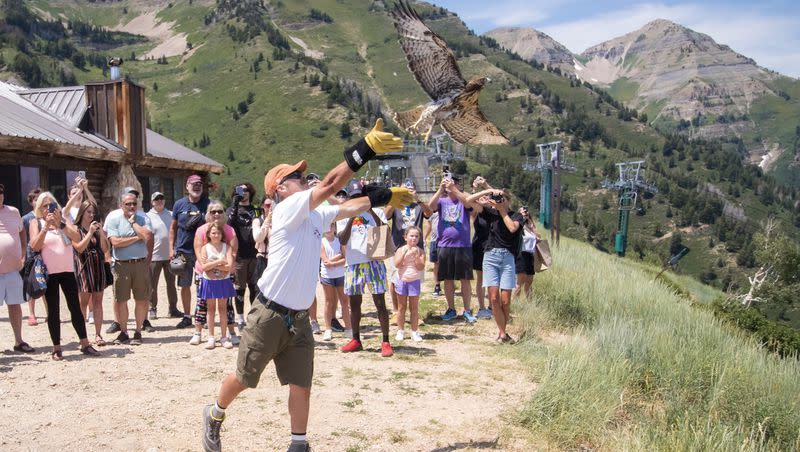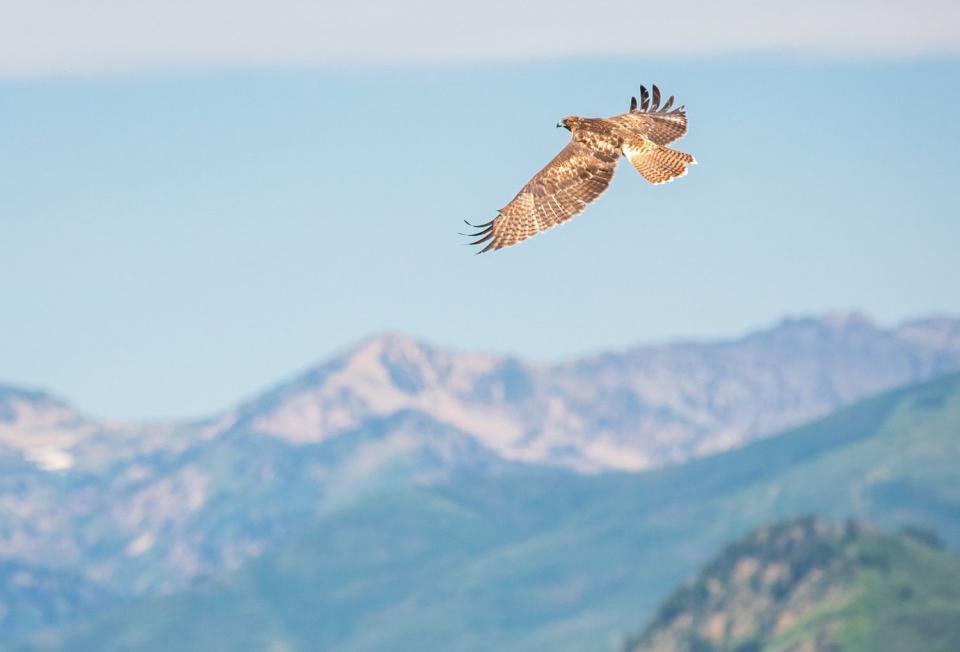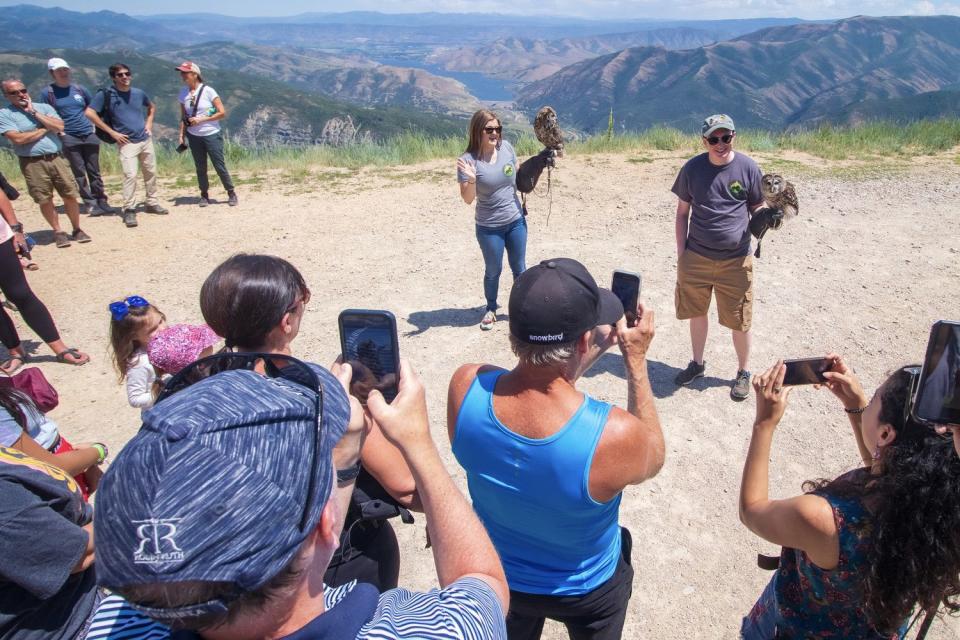As number of injured wildlife increases in Utah, here's how many return to the wild

- Oops!Something went wrong.Please try again later.
Tracy Christensen looked at the juvenile red-tailed hawk in his arms as a volunteer slowly removed the blinder covering the young bird's eyes.
The creature, only a few months old, quickly glanced over to a crowd formed around it at the top of Sundance Mountain Resort Saturday and then up at Christensen, as it surveyed its surroundings.
Moments later, the few dozen spectators gathered on the mountain erupted into cheers as the bird jolted out of Christensen's outstretched arms, flapped its wings and veered left toward Mount Timpanogos, mirroring a path its sibling had just taken a few minutes earlier.
Christensen, a ski patroller and summer mountain safety manager at Sundance Mountain Resort, has had many outdoor experiences at the resort, but none in the past three decades were quite like this.
"That was very special. I've never experienced that before," he said, peering out toward the bird's new home. "The power and the feeling of this wild creature, and just knowing that I was getting to set it free — to where it belongs in the mountains and these beautiful peaks up here."
The bird he released was one of two red-tailed hawks brought to the Great Basin Wildlife Rescue in Spanish Fork after they had fallen out of a nest earlier this year, according to Gavin Skousen, a volunteer with the nonprofit organization. He explained that volunteers helped rehabilitate the birds the past three months, giving them "minimal" human contact so they could learn how to survive in the wild on their own.

The organization picked the top of Sundance as Saturday's release site because it offers each hawk a good aerial view of Provo Canyon, as well as the Utah and Heber valleys, providing them plenty of space to decide where to settle down. It coordinates its releases with resort officials.
"It gives the birds sort of an optimal place to launch from," Skousen says. "It gives them a good opportunity to choose whether they want to be in a more forested area, an open plain, higher up in the mountains — there's just a lot of areas where they can go."
A growing number of wildlife rehabilitation cases
Saturday marked yet another successful release for the organization, which much like similar wildlife rescue centers across the Wasatch Front, is receiving more and more wild creatures every year.
As the region's population grows, there are more people living in and around historic wildlife habitats. There are also more people recreating in wildlife areas; each of these results in more building or vehicle collisions. The center also receives cases where an animal is struggling with a disease or has been illegally shot.
The center helps rehabilitate and release about 100 to 300 birds of prey every year, on top of other types of wildlife, including mammals. Skousen explains that the numbers fluctuate from year-to-year based on different trends. For example, there are more nestlings brought in during wildfire-heavy years because their parents abandon the area.
July also can be busy for centers along the Wasatch Front. Wildlife Rehabilitation Center of Northern Utah officials posted on social media last week that there's usually an uptick in cases tied to animals abandoning their offspring because they become disoriented by fireworks. They may end up fleeing into roadways or flying into windows.
The Ogden-based rehabilitation center received more than 3,500 animal patients in 2021, alone, largely because of the same trends reported in Utah County.
Once at a center, animals are given treatment to help them recover and possibly return to the wild. But not every case has the same happy ending as the one that ended Saturday.
While about 80% or more of the birds the Great Basin Wildlife Rescue receives do make it back into the wild, most of the rest are in such bad shape that they either die or have to be euthanized because their quality of life would be poor even in a controlled setting, Skousen says.

The remaining animals end up at zoos, aviaries or stay at the rescue center as permanent residents, because they can survive — just not in the wild, with their injuries. These animals often are used to help educate people about various species, their habitats and how they ended up in their situation. It's not the ideal ending for every new case, but it's a more desired outcome than the worst-case scenario.
That's why Skousen enjoys events where animals are able to return home. He and others watched in awe as the pair of rehabilitated hawks flew away, into the wild.
"Letting people get up close and personal with wildlife that they'd normally never get to see is really rewarding," he said.
How to deal with a potentially wounded animal
Wildlife rehabilitation cases will likely continue to rise with the region's growth showing no signs of stopping anytime in the next few decades.
Skousen urges residents who come across an animal potentially in need to, first, give it time to make sure it actually is wounded or abandoned before reporting it to the nearest Utah Division of Wildlife Resources office or an accredited local wildlife rescue center. People should not approach the animal themselves, as a safety precaution.
"Definitely wait, and watch. A lot of times, especially at this time of year, young birds don't actually need to be rescued. They are learning to fly and the parents are nearby," he said. "If a bird is visibly injured or is on the ground for a very long time, the best thing to do is to contact (an expert)."
With the right help, they may have a chance to make it back to the wild again, someday.

